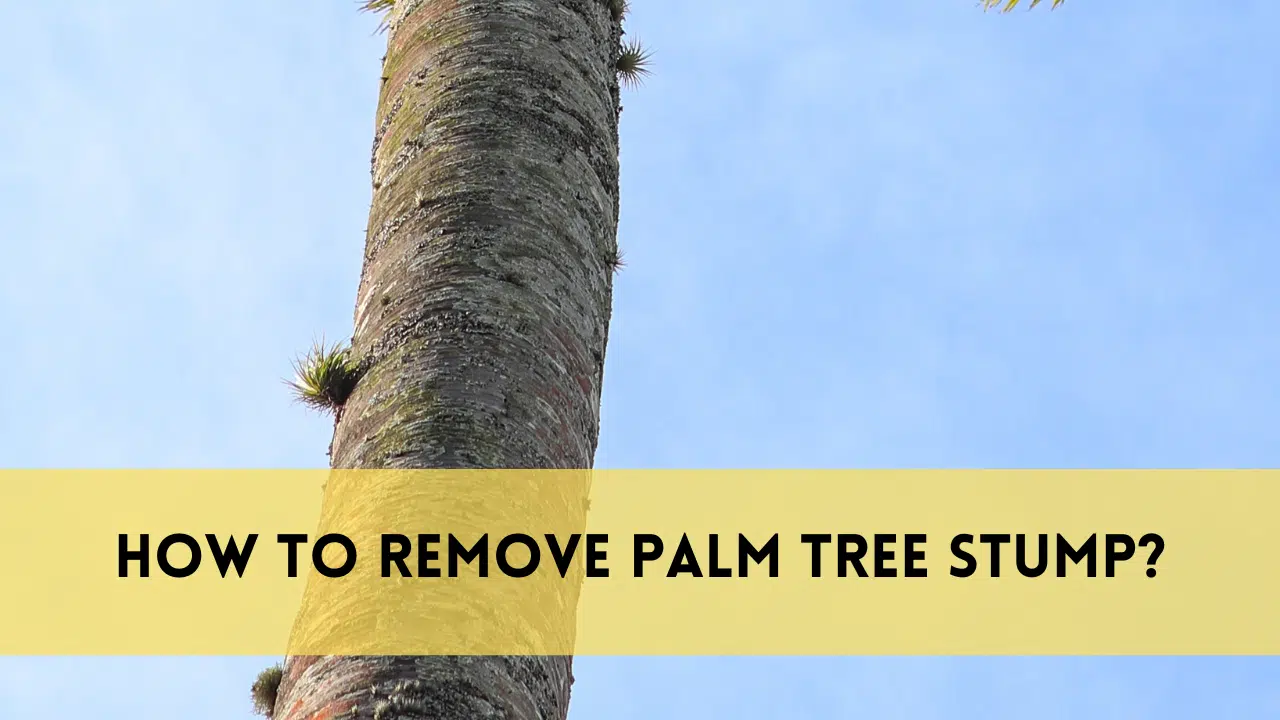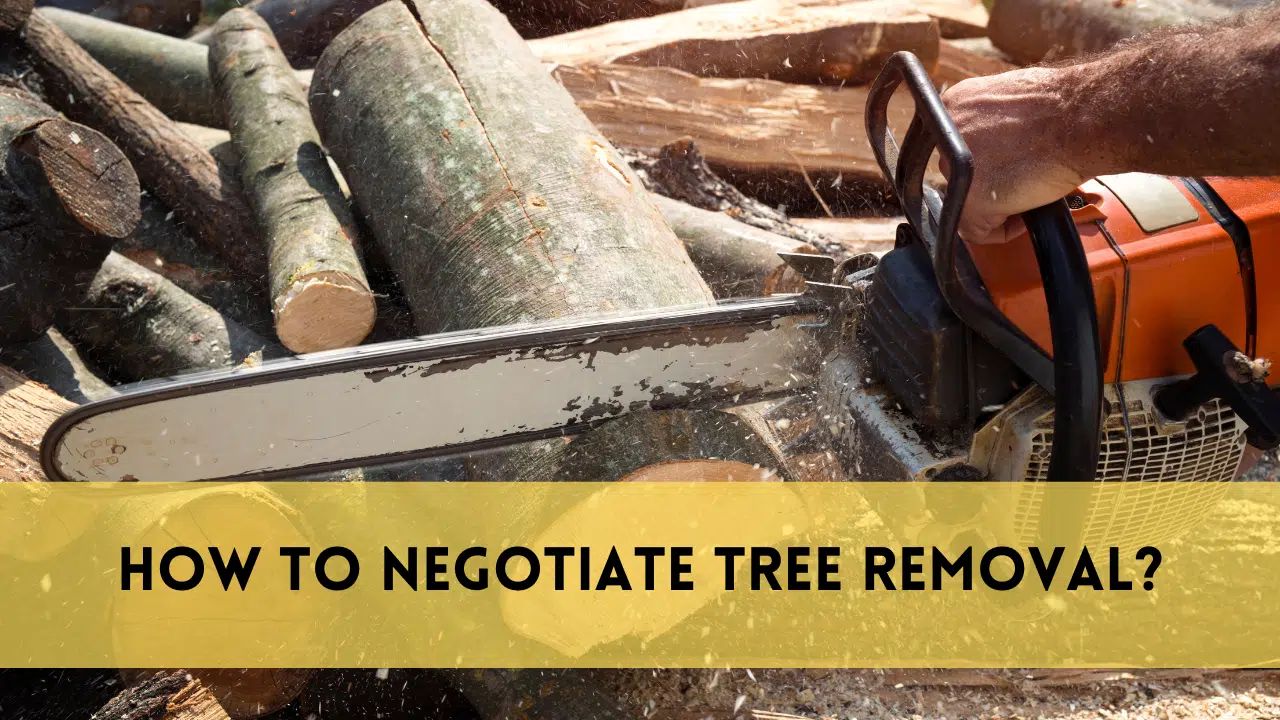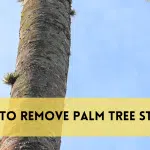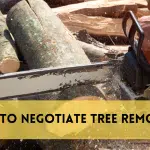How to remove palm tree stump is a common question homeowners are asking after cutting down an old palm tree that used to tower over their property. It doesn’t matter if it became a risk or grew out of the space or passed away, the problem is usually when the tree has gone. You’re left looking at the fibrous, thick stump, wondering how you can restore your landscape to the right shape.
To remove palm tree stump isn’t as easy as working with your typical tree stumps like pine or oak. Palms are an entirely different species. Their roots are thin and fibrous making them difficult in a particular way. However, you don’t have to be an expert arborist to accomplish the task. It’s just a matter of knowing what you’re working on and the correct actions to take and some determination to complete the task.
Why Palm Tree Stumps Are so Stubborn
There’s a fact you may not be aware of Palm trees aren’t technically considered to be trees. They’re more of a giant grass. Their stumps are constructed differently. Think of dense bundles of fibers not the hard, woody rings. When you cut your palm down the fibers stick to the ground and stay tightly, as if they’re not willing to let go.
This fibrous structure makes it tricky to remove palm tree stump. In contrast to hardwood stumps they aren’t able to let them decay and break down in time. They aren’t prone to decay particularly in dry climates. What about grinding them up? This requires a different type of skill.
If you’ve been thinking about it in disbelief at the palm base as if it were an infected thumb in your backyard You’re not alone. A lot of homeowners take shortcuts but end up disappointed. It is important to select the right method to remove palm tree stump based on its size, its age, and site–and also knowing what you can expect.
Choosing the Right Removal Method to Remove Palm Tree Stump
Let’s take a look back at a beautiful afternoon, when Mike, homeowner in San Diego, decided it was time to remove palm tree stump which been positioned dangerously near to the roof of his home. He took out a stump crusher and hoped to complete the task in just a couple of hours. However, by the time sunset came around the frustration was soaring–the grinding device kept getting blocked and the fibers became tangled and he had not made any progress.
Why? Because palm stumps due to their fibrous composition isn’t the best choice for traditional grinders. The method that worked best for Mike was the combination of the manual digging process with cutting techniques and chemical aid. His experience is similar to the challenges that many are faced with – choosing the best method to remove palm tree stump at the beginning will save energy and time.
If the stump of a palm tree is small or was recently cut manually, it may suffice. However, for larger, more seasoned stumps, it may be necessary to use an approach that involves taking the dirt loose, cutting off the roots by using chemical stump removal products or burning them in areas that are approved. The timing is also important. A softer soil after a rainfall? Easier digging. Dryer seasons? Work harder.
Manually Remove Palm Tree Stump: Patience Is Power
If you’re looking to do it the traditional method manually remove palm tree stump is possible, but be prepared to sweat. Begin by digging around the base and exposing the most roots you can. As opposed to hardwoods, palms do not have deep taproots, which means you’re mostly dealing with a small group of roots lateral to each other.
Utilizing a flat spade or a root saw, start cutting the fibers. The more you cut the more you release the grip. By watering the area prior to planting, you help to soften the soil, which makes the task simpler. As you work you’ll probably come to an area where the stump starts shifting slightly. This is the signal to leverage as your best friend. Utilize a long, pry bar, place it in the stump, then rock it between the two.
It’s not a quick fix it may take time, and you might have to return in several days. However, many people find joy in seeing the stump fall free, without having to purchase tools or other services.
Using Chemicals to Speed up The Process
Let’s say that you do not have the time or the energy to cut and dig for several days. Use stump removal chemicals as your most effective weapon if you use them correctly. They work by speeding up the natural process of decomposition of the stump, thereby breaking down the fibers over weeks or even months.
You’ll have to drill a few holes in the top of the stump as deep as the bit can accommodate. Pour the chemical solution through each hole, then cover the entire area, and let the time do the work. Be sure to keep pets and children away from these substances, since they are not designed to be played with.
This method to remove palm tree stump doesn’t provides immediate satisfaction. However, for homeowners such as Sarah in Phoenix who was left with multiple stumps of palm following a renovation of her backyard It was a simple solution while she worked on other tasks. In a short time the stumps became soft enough to break with a simple tool.
Burning: When It’s Allowed and How It Works
Burning a stump from a palm tree may seem intense, but in rural or non-regulated areas, where it’s legal, it could be an effective method. Be sure to check that your the local fire codes allow open fires and consider safety first.
Start by drilling holes in the stump, then pouring in a flammable accelerator such as the kerosene (never gasoline). After the soaking process, which can last for several days, light the stump and watch closely. The slow burn could take up to an entire day, based on the size.
Since palm wood isn’t burned as cleanly or hot as hardwoods, you might have to light or feed the flame regularly. When the fire is diminished to an ash-like substance, you’ll need to remove any remaining roots. This technique is ideal for areas that are remote and have no structures in the vicinity, and certainly not suitable for lawns in cities.
Renting or Hiring: When It’s Worth the Investment
Sometimes, the most effective way to remove palm tree stump is to let professionals take care of the job. If your stump is massive or is close to a structure or located in an unaccessible location, renting a heavy-duty machine and hiring an stump-removing company is a smart option.
Grinders for palms are specially-designed instruments designed to cut through fibrous tissue without causing jamming or overheating. A skilled team can usually remove palm tree stump of a significant size within an hour or less, something that could take DIYers for a weekend.
The homeowner David in Tampa discovered this lesson the hard way after three days of working on the stump of 30 inches. On the fourth day when he contacted a service and watched them complete the job in less than 45 minutes. It’s sometimes not only about doing it yourself. It’s also about knowing when it’s best not to.
Life After the Stump: Reclaiming Your Landscape
When you remove palm tree stump, you’re left with a dirt patch, but you’ve created a blank page. This is the ideal moment to plan the next steps. Do you want to replant a tree? Do you want to fill the space with grass? Install a garden bed, or hardscaping?
Make sure to fill the hole back with new soil, then tamp it down, then water it thoroughly to stop it from sinking. As time passes, the soil will settle, which is why it’s best to overfill the hole and then level it out in the future. The space should be treated as new beginnings, since it’s.
For a lot of people, to remove palm tree stump is more than clearing the space. It’s about regaining control of their backyard, and making a difficult obstacle an chance to improve and beautify the area.
FAQs
Can I remove palm tree stump using Epsom salt in place of chemical?
Yes, Epsom salt can help to remove palm tree stump over time. The process is more slow than removers that are commercially available, but thought to be more natural. It is required to repeat the application for a period of time.
How deep will the palm tree’s roots normally extend?
The palm roots tend to be low, spreading horizontally instead of deep. This makes them much easier to excavat when compared to hardwoods. However, that fibrous roots mass may nevertheless be quite very dense.
Can palm tree stumps grow back when left in the ground?
When an palm is cut it is not likely to grow off the stump. But, suckers can be seen at the bottom of certain species, but they are typically weak and can be easily removed.
What is the earliest time when I cut a palm, can I take it down?
It is possible to begin the process to remove palm tree stump right after cutting the tree. If you are planning to apply chemicals, letting your stump sit for few weeks could enhance absorption and increase effectiveness.
Are there dangers for underground utilities or pipes to remove palm tree stumps?
Always contact your local utility provider prior to digging so that you don’t harm lines. Although palm roots aren’t deep but it’s crucial to be careful when digging.
Conclusion:
Knowing how to remove palm tree stump isn’t only about removing an old piece of wood. It’s about taking back your outdoor space as well as restoring safety and opening the doorway to new possibilities. You can choose the traditional route, employ chemicals or fire, or even hire an expert, the most important thing is knowing the distinct nature of stumps from palm trees and deciding on the one that best suits your needs.
It’s not easy however, when you’re doing it right it’s doable. Once that stump is gone and the satisfaction of the job done well–and having the yard ready for something new — is worth every second of the effort.








